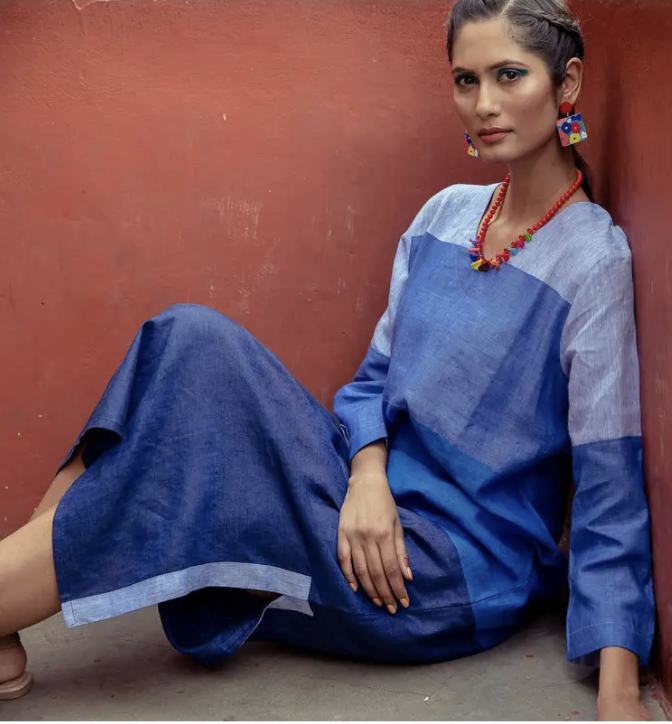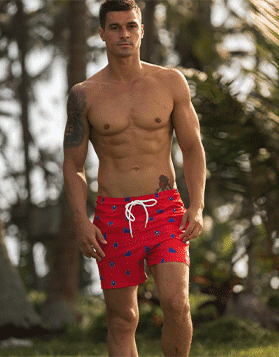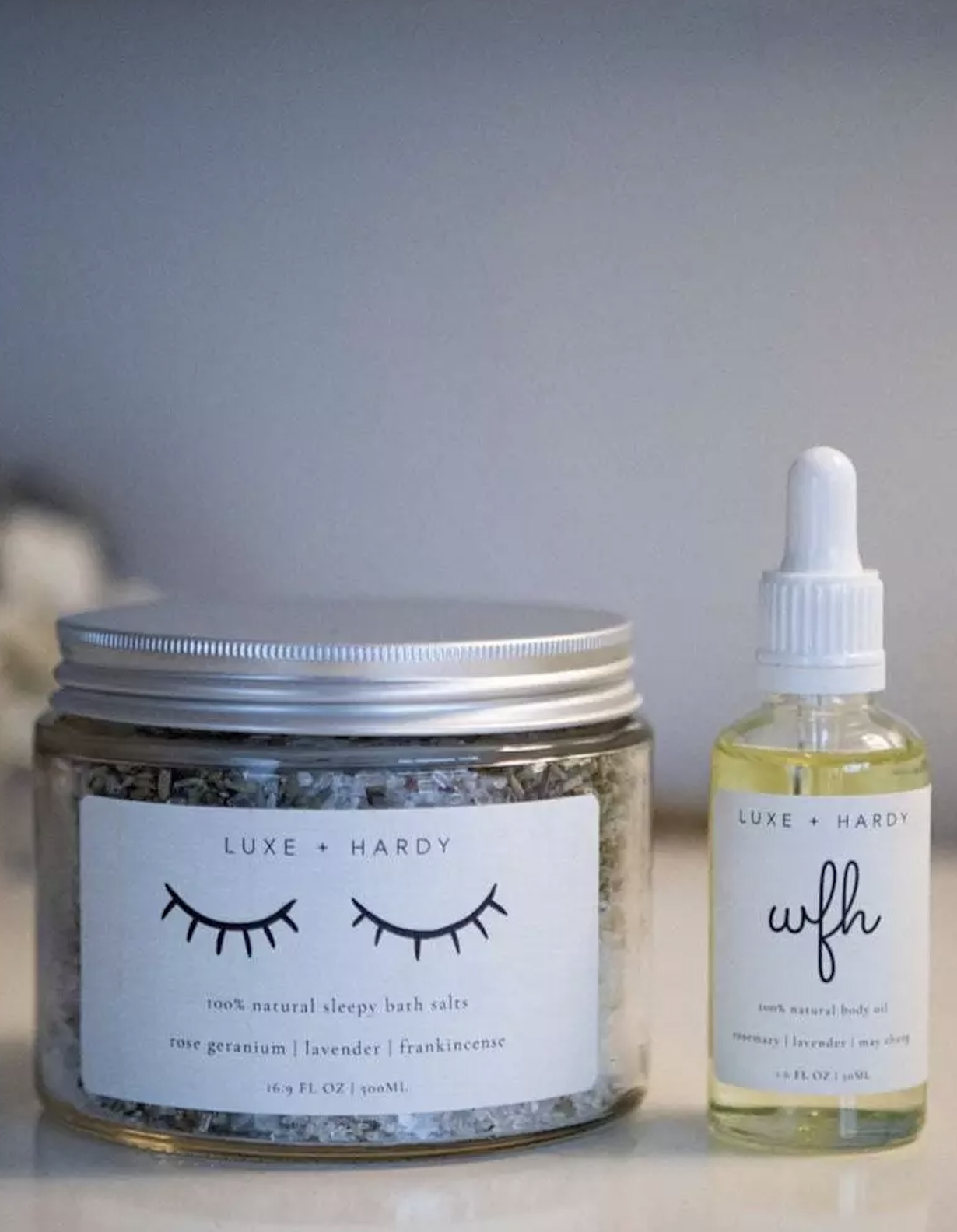Sustainable Fabrics: What Do You Know About Tencel™?
In the current climate, sustainable fabrics, eco-clothing, and environmental fashion are of the utmost importance for conscious consumer needs.
In that spirit, Tencel™ is becoming an increasingly popular material used by responsible clothing brands.
But, what actually is tencel™?
Tencel™ is a branded lyocell fabric owned by the Austrian company Lenzing, which specialises in producing sustainable fibres.
It is created through an environmentally friendly process using sustainably sourced wood, so it is naturally biodegradable.
What is the difference between Tencel™ lyocell and ordinary lyocell?
The truth is, there is not a whole lot of difference between Tencel™ and lyocell. But, being a trademark, Tencel™ provides more transparency and traceability on the entire production process through exhaustive reports and its fibre identification technology.
For example, most of their wood pulp comes from forests that are FSC (Forest Stewardship Council) or PEFC (Programme for the Endorsement of Forest Certification) – certified, and the sustainable practices in their factories, chemical uses, and overall environmental accountability can be easily verified. However, you can still check with your supplier about non-branded lyocell.
So, How Is Tencel™ Made?
In short, it’s made using a closed-loop production system, meaning the company reuses 99% of all the chemicals employed and feeds any co-products and residues back into the production process for energy generation.
This way, all resources are used efficiently, and the whole process takes up less water, energy, and chemicals, thus minimising its environmental footprint.
The raw material collected from the trees is transformed into wood chips that go into a pulp mill. The wood pulp is then mixed with an organic solvent and dissolved into fibres through a drying process called spinning. Finally, the mixture is pushed through small holes to form threads and spun into yarns to be used in clothes production.
Tencel Vs. Viscose And Rayon
But, how does Tencel compare to other wood-related fibres such as viscose and rayon?
Tencel, rayon, and viscose are all created using man-made cellulosic fibres and their production process and qualities are quite similar.
Even though rayon and viscose are often used interchangeably, their main difference lies in the manufacturing process.
While rayon’s raw materials can be either bamboo or wood cellulose, viscose is made from wood cellulose and plant fibres, which are turned into a thick liquid that undergoes a series of chemical processes.
Rayon was actually one of the first generations of this fibre. It is made mainly from bamboo, a great sustainable source that is super easy to grow and reduces CO2 more than any other forest.
Tencel™ is made mainly with eucalyptus grown in plantations or responsibly sourced beech, birch, and spruce wood. Eucalyptus is also very good at absorbing CO2 — not quite as much as bamboo, but certainly not far behind!
Tencel™, however, produces its pulp from sustainable sources of wood, whereas 30% of rayon and viscose come from endangered or ancient forests!
It’s also great when it comes to land usage, as it requires five times less farmland than cotton for the same amount of material and the eucalyptus trees are usually grown on arid land unfit for other crops.
Another big difference between these fibres is the production process. Creating rayon and viscose requires multiple hazardous chemicals, including carbon disulphide, which can be harmful to factory workers or people living near the plant.
Even though it is possible to make the process less harmful, most bamboo rayon is produced exclusively in China, where safety and environmental standards aren’t as high.
Tencel, on the other hand, only requires one biodegradable, non-hazardous chemical called NMMO.
So, with regard to dangerous chemicals and environmental impact, you rest assured that Tencel is definitely more sustainable than viscose or rayon.
What Are The Pros?
There are lots of benefits and reasons why you should consider buying garments made of Tencel™.
The most obvious, of course, is its low environmental footprint.
But, as we all know, comfort is key. No one wants to help the environment in exchange for suffering in uncomfortable clothes.
Fortunately, Tencel is made from tiny fibres called nanofibrils, which make the clothing incredibly soft and durable.
These nanofibrils are also naturally hydrophilic, meaning they absorb moisture quickly and then release it without making the clothes feel uncomfortable.
This unique quality makes Tencel™ fabric odourless and antibacterial — perfect for your sportswear!
The fabric is also biodegradable, so when your garment is getting closer to the end of its lifecycle, if you don’t choose to donate or find it a new home, you can rest easy knowing it won’t sit in a landfill for centuries!
Ideal For Sensitive Skin
Tencel™ has been an increasingly popular material in the bedding industry due to its durability
and naturally hypoallergenic and breathability elements.
Combined with its smooth texture, Tencel is softer than most cotton fabrics on the market and ideal for babies or people with sensitive skin.
The material is also very resistant to shrinking and wrinkling, making it easy to throw in the wash whenever necessary while still preserving its quality and comfort!
The Downside?
Cost. Unfortunately, all of these great qualities come at a higher price than other fabrics out there.
Tencel only makes up a small portion of the materials in production and costs more to produce than cotton, which is inevitably reflected in the price tag.
So, Is It Worth It?
Like many sustainable products, the initial cost may seem a little higher, but the price of a quality, sustainable product outweighs the smaller initial outlay of something that’s low-quality and has a negative impact on the environment.
Sold! Where Do I Find It?
Here are a few brands we work with that have already hopped on the Tencel™ train:
Is a sustainable lingerie company based in France. The brand’s mission is for women to feel pretty and comfortable in lingerie that is gentle both to their skin and the planet. That’s why they only use organic cotton, recycled lace, and Tencel™ for all of their products!
Athletic apparel brand was founded by a group of friends who were fed up with all sportswear containing plastic; so, they took matters into their own hands! The result? A collection of amazing high-performance clothes that are 100% plastic-free and made with fair production from hemp, Tencel™, and organic cotton.
Is a brand dedicated to providing luxury to your everyday life through simple, multifunctional designs. Their goal has always been “to merge ethics and aesthetics”, which is why they have an entire collection made of their 37.5® fabric created from Tencel, polyester, and volcanic minerals.
All things considered, Tencel™ is an excellent choice when trying to shop more consciously. Many responsible clothing brands are already using Tencel™, and it is definitely making an impact.
We are certainly hoping that it will become more accessible and affordable in the coming years to keep not just the planet happy but consumers too!
Well, with environmental fashion slowly becoming the norm, it wouldn’t be surprising to see more of this innovative eco-clothing material cropping up in all areas of the industry!
Wild Fabrik
At WILD FABRIK, we believe that fashion is a universal language through which we communicate who we are and what we stand for. With our blog entries we aim to provide you with an elegant guide to a sustainable lifestyle, packed with our experience, knowledge, and continuous research on sustainability matters. Driven by our passion for all things green, we hope to inspire you to be your own label and make conscious choices that look — and feel —good.
Is there something you’re particularly interested in reading from us? Drop us an email and let us know!
“Tencel™ is becoming an increasingly popular material used by responsible clothing brands.”

- Dubai, Festival City Mall, Crescent Drive
- +971-54-382-8897
- Mon-Sun 9.00 - 18.00
- [email protected]
- View on map






